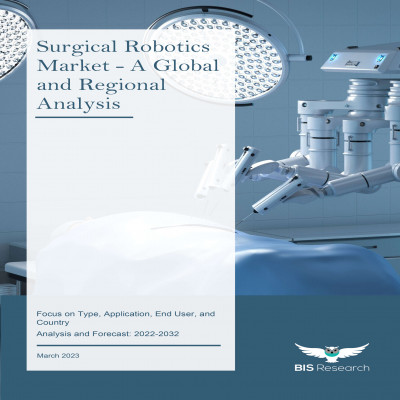A quick peek into the report
Asia-Pacific Surgical Robotics Market - Analysis and Forecast, 2022-2032
Frequently Asked Questions
The Asia-Pacific (APAC) Surgical Robotics market is expected to grow at a CAGR of 17.29% from $1,637.6 Million in 2022 to $8,068.7 Million by 2032 in the forecasted period of 2022-2032 and the global surgical robotics market was valued at $8,724.2 million in 2022 and is anticipated to reach $30,950.4 million by 2032, witnessing a CAGR of 13.50% during the forecast period 2022-2032.
The Asia-Pacific (APAC) region has seen a growing presence of key players in the field of robotic-assisted surgery, and several companies are vying for leadership in this rapidly expanding market. While the competitive landscape continues to evolve, Intuitive Surgical, Inc. has established a strong foothold with its da Vinci Surgical System, which is widely recognized for its applications in various surgical specialties. Medtronic Plc, a global leader in medical technology, has made significant inroads with its Mazor X Stealth Edition, particularly in spine surgery. Additionally, local players and emerging innovators in the APAC region are contributing to the competition, driving advancements in robotic surgical technology. As the market for robotic-assisted surgery in APAC continues to grow, it presents a dynamic landscape with opportunities for established and emerging companies to lead and shape the future of minimally invasive surgical procedures in the region.
Prominent trends within the surgical robotics market encompass the rising pace of technological innovations in this field, expanding adoption of robot-assisted surgical procedures, breakthroughs in microsurgery applications, and the emergence of cognitive surgical robots.
Unquestionably, one of the most important aspects of medical operations in the future will be the incorporation of robotics into the field of surgery. While conventional surgical techniques will always be necessary, robots in surgery represents a paradigm shift with several benefits. These include improved visualization of surgical sites through high-definition 3D cameras; dexterity that mimics the intricate movements of a surgeon's hand, facilitating complex tasks; the potential for remote or telesurgery as high-speed networks advance; and the invaluable role of surgical robots in training and simulating procedures to sharpen the skills of medical professionals. enhanced precision allows surgeons to perform with remarkable accuracy.
Furthermore, robotic surgery may make specialist care available in underserved areas. Surgical robots have the potential to become an essential part of the surgical scene as long as technology keeps developing and getting more sophisticated. Surgeons will probably combine robotic-assisted and conventional surgical methods in the future, using these instruments to enhance their skills and provide the best possible care for their patients.
Numerous surgical specializations have been significantly impacted by the rise of robotic surgery, with certain professions seeing notable breakthroughs. Of them, urology is notable for having one of the fastest rates of growth for robotic surgery. Robotic-assisted prostatectomy, nephrectomy, and cystectomy are among the procedures that are now considered routine practices because of the surgical robots' precision and dexterity. Urologists have embraced technology in order to improve overall quality of care, shorten recovery periods, and improve patient outcomes. It's crucial to remember, though, that robotic surgery is still making inroads into a variety of other areas, such as cardiology, general surgery, obstetrics, and more. It is anticipated that robotic surgery will continue to expand throughout a wide range of medical specialties as technology advances, revolutionizing the landscape of surgical robotics.
The market for robotic equipment is expected to grow rapidly because of a number of important variables that are influencing its future. This expansion is mostly driven by technological developments, as advances in sensing, artificial intelligence, and machine learning allow robots to carry out ever-more-complex tasks autonomously and precisely. The deployment of robotic systems to increase productivity and lower operating costs is being propelled by the trend toward automation across a number of industries, including manufacturing, healthcare, logistics, and agriculture. A greater range of companies and sectors may now afford and utilize robotic equipment thanks to the growing availability of customized robots made to meet particular industrial needs and the falling cost of robotics technology. Demand is being driven by the importance placed on quality, safety, and the capacity to work in demanding conditions in industries like manufacturing and healthcare. Robotics integration is being fueled by the growth of e-commerce and logistics to optimize warehouse operations and last-mile delivery. Precision farming and crop management are being revolutionized in agriculture by robotic technology. Robotic applications in healthcare are also growing rapidly, ranging from surgery to diagnostics. Human-robot cooperation is being promoted by collaborative robots (cobots), which provide safe and adaptable automation solutions. The market for robotic equipment is expected to grow as these trends continue to develop, offering increased productivity, efficiency, and safety to a variety of industries.

